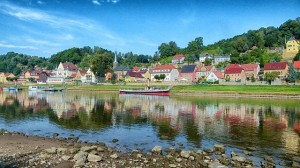Top Dialects of the German Language
Image via OTB / flickr
In the Middle Ages, a standardized version of the German language did not exist. Instead, there were a smattering of individual Germanic dialects, each of which belonged to a particular tribe or village. Given that Germany did not unify as a country until 1871, a standard variety of the German language was introduced relatively late in the history of the language. As such, there are still strong regional differences among different dialects. Though there are numerous individual dialects throughout Germany, here are some of the most important dialect groups.
1. High German/Hochdeutsch
High German or Hochdeutsch is the standard version of the German dialect which is used in the business, political, and academic spheres. If you’re learning German, it’s more than likely that you’re learning the High German dialect. Nearly all German speakers are capable of understanding High German.
High German is referred to as such because of its geography: it’s spoken in the highlands of Germany. In contrast, the Low German dialect is spoken on lower, flatter lands.
2. Bavarian-Austrian
The Bavarian-Austrian region of Germany covers a wide area in the country’s south, as well as other German-speaking territories outside of Germany proper, such as Austria. The Bavarian-Austrian dialect is spoken in major cities such as Munich and Vienna. A 2009 poll revealed that the Bavarian accent is the most-beloved accent among German speakers.
3. Middle German/Mitteldeutsch
As its name suggests, Middle German or Mitteldeutsch is spoken in the geographic middle of Germany, covering a swath of land that stretches from Luxembourg to Poland. Many important cities, such as Cologne and Frankfurt, use the Middle German dialect. Within the Middle German dialect, there are substantial differences between the varieties spoken in the West and East.
How good is your German? Find out by taking our free online German level test!
4. Low German/Plattdeutsch
As mentioned before, the Low German or Plattdeutsch dialect has nothing to do with social standing: it’s named such because it’s spoken primarily in low-altitude areas. Low German may be easier for native English speakers to understand, as it resembles English more than Middle or High German

Image via Pixabay
5. Frisian
When it comes to similarity to English, however, the Frisian dialect takes the cake. Spoken in the Southern extremities of the North Sea in the Netherlands, Germany, and Denmark, the Frisian dialect is widely considered to be one of the closest living languages to English.
6. Alemannic
Alemannic is a widely-spoken variety of High German that has about ten million native speakers. It’s spoken in the entire German-speaking part of Switzerland, as well as in several other countries including Austria, Liechtenstein, France, and, of course, Germany.
Given the fuzzy definition of what constitutes a dialect, it’s hard to say how many German dialects there are in total. But estimates usually range from 50 to 250, meaning that this list only scratches the surface of the several rich dialects that you’ll find in the German language. Regardless of which dialect you want to speak, the best way to learn German is to take classes from a qualified German teacher, who can help you learn the language as quickly and efficiently as possible. Send us a quick inquiry to find out more about how we can help you learn German.



